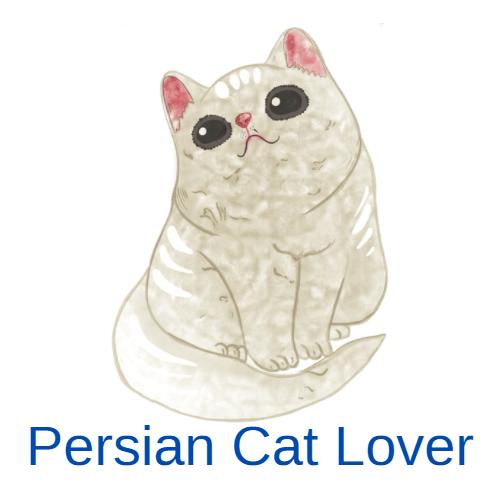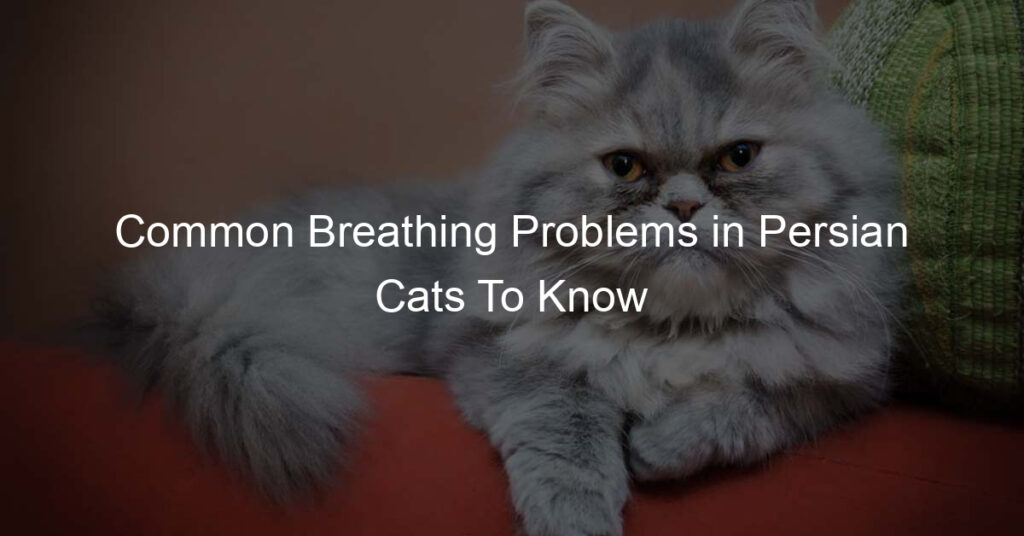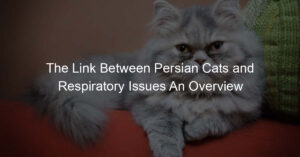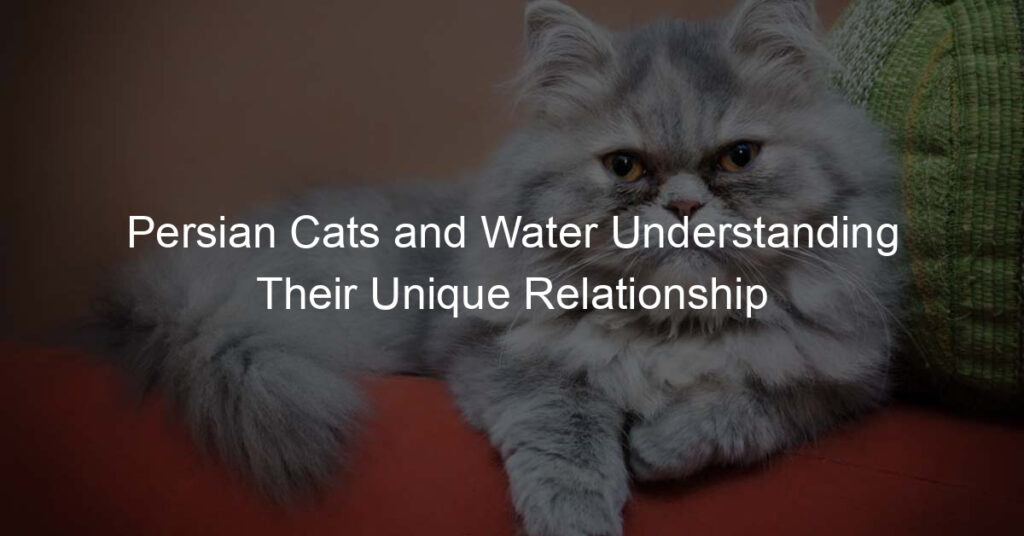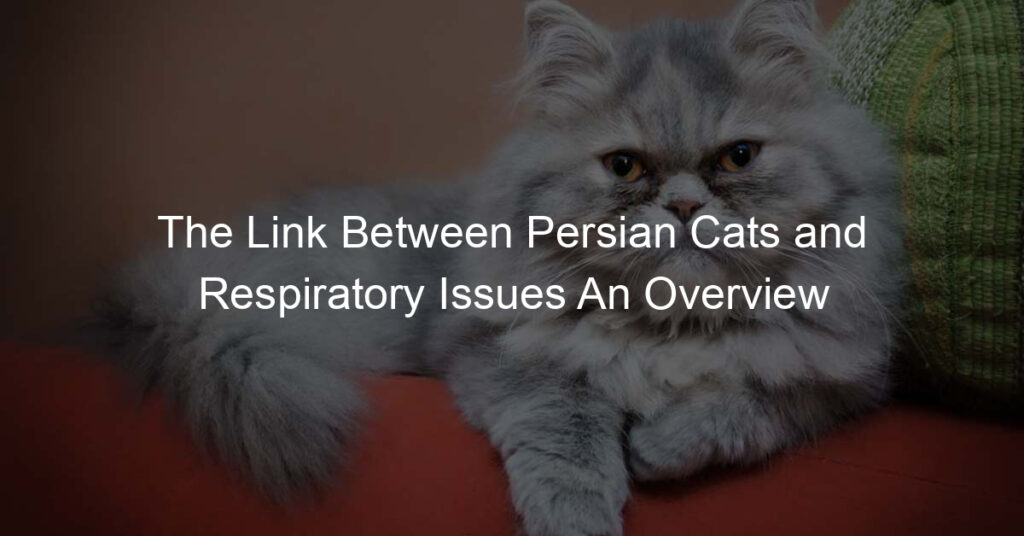Do you have a Persian cat? If so, you might be wondering if they’re prone to any particular breathing problems. After all, those flat faces can make it seem like they’re working harder to breathe than other cats.
Fortunately, most Persian cats don’t have any serious breathing problems. However, there are a few common issues that you should be aware of.
In this blog post, we’ll go over some of the most common breathing problems in Persian cats and what you can do about them. Keep reading to learn more!
How do you help a Persian cat breathe?
When it comes to Persian cats, respiratory problems due to their flat facial structure are not uncommon. To help your Persian cat breathe more easily, the environment must be monitored closely and kept free of pollutants or allergens.
Additionally, it is essential to ensure their airways remain clear—regular brushing of their fur coats to prevent hairballs and matted fur can make a difference. Humidifiers should also be used if needed for your cat to get relief from dry air.
A good diet rich in omega-3 fatty acids can help improve the condition of their coat, which in turn helps them keep their air passages clean. Ultimately, being aware of potential issues and taking the required steps is the best thing you can do for your feline companion.
What can I give my cat to breathe better?
Taking care of your pet’s health is essential, so if you feel your cat is having difficulty breathing, it’s important to take action. Fortunately, there are several ways you can help your pet breathe more easily.
First and foremost, it’s important to get your cat evaluated by a vet as soon as possible to determine what is causing the breathing difficulties and to create a treatment plan that works best for your pet.
In some cases, medication may be recommended as part of the treatment plan, but you can also make a few simple changes in your home environment that could help improve your cat’s breathing.
Consider replacing things like air fresheners that could be harmful to pets with something like a litter box filled with safe natural kitty litter or an air purifier made just for pets.
Keep your pet’s fur clean and healthy by brushing regularly and ensuring they stay hydrated with plenty of water to avoid anything getting blocked in their throat.
With the right steps taken, you can give your cat the relief they need and breathe easy knowing they are well cared for.
What position helps a cat breathe better?
When a cat has breathing problems, the position it takes can make a real difference in its comfort and overall well-being.
To help cats get the best possible air intake, veterinarians suggest that owners drape their pets over their arms with the nose slightly higher than the rear end.
This lets the airflow through the body as well as possible, putting less strain on the lungs and diaphragm and spreading it as evenly as possible.
By taking this relatively simple step of providing your cat with proper support, you can help to relieve any congestion or difficulty they may have experienced while attempting to breathe normally.
How do I know if my cat is in respiratory distress?
Cat owners should be on the lookout for signs that their cats are having trouble breathing. Generally, the most noticeable symptom is rapid and shallow breathing. If a cat suddenly appears to be having difficulty breathing or is panting heavily, it may be experiencing respiratory distress.
Other symptoms can include sneezing or coughing, as well as a watery or foamy discharge from the nose or mouth. In addition, cats may also display signs of lethargy, become swollen around their face or eyes, and have an increased heart rate caused by a lack of oxygen.
Persons should seek immediate veterinarian attention once these worrying signs appear, as failure to do so could lead to serious consequences for the cat’s overall health.
How do you clear a cat’s lungs?
Clearing a cat’s lungs can often be a daunting task, but it doesn’t always have to be. There are various methods of clearing a cat’s airways and reducing the risk of respiratory issues, such as using liquid medications like antibiotics or expectorants.
Additionally, environmental modifications may prove beneficial for some cats with respiratory complications. Keeping your pet indoors, away from high levels of dust and other substances that could aggravate the respiratory system is sometimes necessary.
Quitting smoking is particularly useful if you live in close quarters with your feline friend, as secondhand smoke can easily damage their lungs.
If you suspect any potential respiratory illnesses or conditions affecting your cat’s health, it is always best to consult with a veterinary healthcare provider who will assess the situation and provide the most appropriate treatments available to make your cat feel better in no time!
Wrapping Up: Common Breathing Problems in Persian Cats To Know
In conclusion, Persian cats are at risk of a variety of breathing problems that all owners should be aware of. Knowing the symptoms and causes of each breathing problem helps owners provide the best care for their cats.
Aside from the common concerns outlined here, there may be other conditions unique to each cat, so it is important to visit your veterinarian regularly for checkups.
Additionally, providing a smoke-free and dusty environment can help reduce the risk of respiratory issues in Persian cats.
Making sure your pet has regular grooming sessions can also help reduce the amount of fur clogging your cat’s nose; if not groomed properly, extensive scaling and shedding can lead to difficulty breathing due to too much hair inside the nasal canal blocking oxygen flow.
With regular veterinary check-ups, attentive care from an owner, and clean living environments, Persian cats can largely prevent the most common complications with their respiratory systems.
